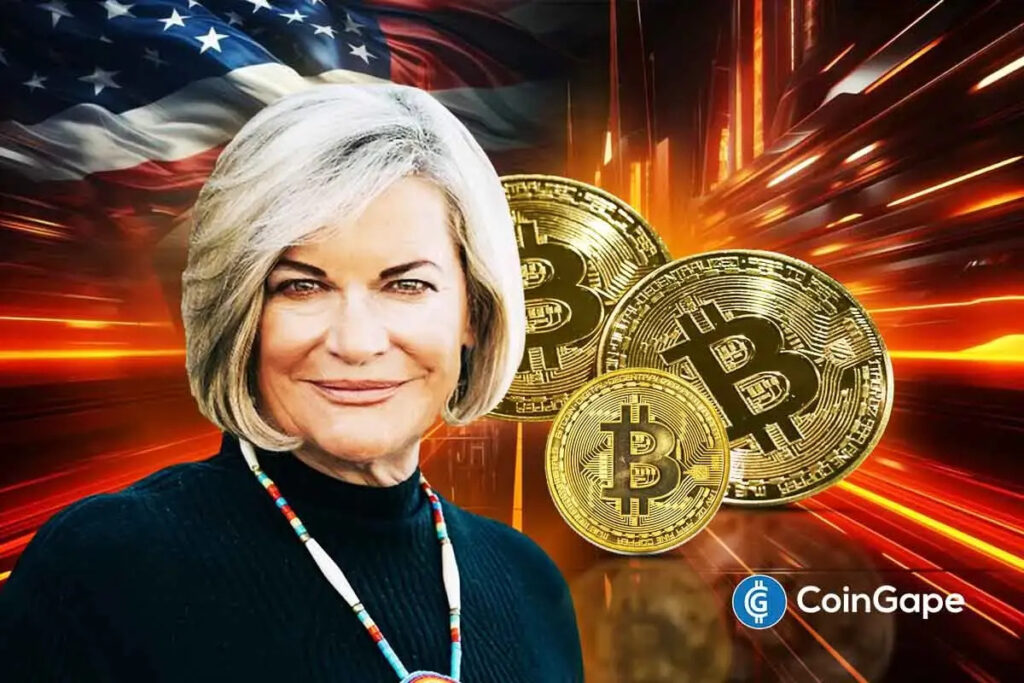U.S. Senator Cynthia Lummis Critiques JPMorgan’s Anti-Crypto Stance: An SEO Optimized Analysis
In a bold move that has sparked considerable debate, U.S. Senator Cynthia Lummis has publicly criticized JPMorgan for its anti-cryptocurrency stance. Specifically, she has called for an end to what she terms Operation Chokepoint 2.0, which she argues undermines public trust in traditional banking systems and stifles the growth of digital assets within the United States. Lummis’ remarks come in light of JPMorgan’s recent closure of the accounts belonging to Jack Mallers, a prominent advocate for cryptocurrency and CEO of the Bitcoin payment firm, Strike.
The situation escalated following JPMorgan’s decision to terminate Mallers’ accounts without providing a concrete explanation, other than citing "concerning activity" detected during routine reviews. This lack of transparency has drawn ire not only from Mallers but also from Lummis and other cryptocurrency supporters. Lummis took to social media platform X (formerly Twitter) to express her stance, asserting that such banking policies erode trust and effectively push the burgeoning digital asset industry overseas. Her remarks reflect a growing concern among crypto advocates that traditional banks are resisting a significant evolution in the financial landscape.
Operation Chokepoint 2.0: A Barrier for Cryptocurrency Firms
Operation Chokepoint 2.0 aims to restrict access to banking services for firms operating within the blockchain ecosystem, effectively cutting off crucial support for the cryptocurrency sector. The original Operation Chokepoint was initiated by the U.S. Department of Justice in 2013, targeting banks that engaged with businesses considered high-risk, including those in the cryptocurrency space. Critics argue that the legacy of this initiative continues to overshadow the relationship between the banking sector and digital assets, leading to a mistrust that hampers innovation and growth.
While JPMorgan has demonstrated some willingness to innovate within the digital realm—such as launching its own stablecoin, JPM Coin, and conducting blockchain research—it remains cautious about fully integrating cryptocurrency as a viable asset class. Lummis has urged the bank to adapt its approach, emphasizing a growing consumer demand for digital assets. By clinging to outdated views on cryptocurrency, institutions like JPMorgan risk missing out on opportunities for growth and modernization in an increasingly digital financial landscape.
The Fallout: Mallers’ Experience and Industry Reactions
Mallers’ predicament underscores a broader struggle faced by cryptocurrency advocates grappling with traditional financial institutions. Highlighting the long-standing relationship his father had with JPMorgan for over three decades, Mallers has expressed his disappointment at the bank’s abrupt decision. He argues that the lack of a valid reason for closing the accounts highlights a troubling trend of withholding transparency from clients, particularly those supporting innovative digital asset technologies.
In addition to Mallers’ story, the backlash against JPMorgan has also come from a variety of influential figures in the cryptocurrency community. High-profile advocates such as Grant Cardone and Max Keiser have joined the chorus of criticism, arguing that such actions undermine the efforts towards greater acceptance and integration of cryptocurrencies into mainstream finance. The situation has amplified calls for financial institutions to rethink their strategies and embrace technological advancements that align with the future of finance.
Ties to MicroStrategy: An Additional Layer of Controversy
Adding further complexity to the ongoing tensions between crypto advocates and JPMorgan is the bank’s relationship with MicroStrategy, a company led by Bitcoin enthusiast Michael Saylor. MicroStrategy holds a substantial amount of Bitcoin in its treasury, representing a significant commitment to the cryptocurrency. Critics of JPMorgan have pointed to this duality—engaging with Bitcoin-supportive firms while concurrently practicing exclusionary policies against others in the crypto realm—as contradictory and indicative of the bank’s cautious approach toward the digital asset world.
This dissonance has fueled skepticism among cryptocurrency proponents regarding traditional banks’ long-term commitment to embracing digital finance. If institutions like JPMorgan can maintain profitable relationships with companies heavily invested in Bitcoin while simultaneously targeting other cryptocurrency firms, it raises questions about the bank’s overall strategy and vision for the future of finance.
The Call for Change: A Turning Point for Traditional Banking?
Senator Lummis’ criticism of JPMorgan serves as a clarion call for change in the financial sector. By challenging Operation Chokepoint 2.0 and urging banks to reconsider their policies, Lummis advocates for a paradigm shift that could benefit both traditional financial institutions and cryptocurrency firms alike. As the demand for digital assets continues to rise, banks that adapt to these changes can position themselves at the forefront of a burgeoning market.
Failure to adapt might result in banks losing their grip on innovative financial technologies and services that the next generation of consumers will demand. As cryptocurrency becomes increasingly integrated into mainstream finance, institutions must either pivot towards a more inclusive stance or risk being sidelined in a rapidly evolving marketplace. The landscape of finance is changing, and Senator Lummis’ stance reflects a vital push towards embracing that change rather than resisting it.
The Path Ahead: Future of Cryptocurrency and Banking
Looking forward, the intersection of cryptocurrency and traditional banking practices remains a critical area for discussion and development. As both sectors grapple with the implications of regulations and consumer behavior, collaborative approaches will be essential to drive growth and trust in the evolving digital asset landscape. By fostering open dialogue and transparency, financial institutions can build relationships that empower innovation while ensuring compliance with regulatory frameworks.
Ultimately, the ongoing discussion surrounding JPMorgan, Senator Lummis, and Operation Chokepoint 2.0 serves as a microcosm of the broader narrative unfolding within finance. As traditional banks contend with the disruption posed by cryptocurrencies, it will be vital for them to engage thoughtfully with this new asset class that promises to shape the future of money. Positive change hinges on cooperation, evolving policies, and a commitment to understanding the transformative potential of digital assets.


